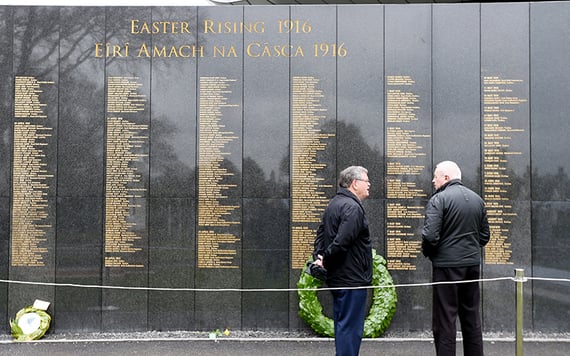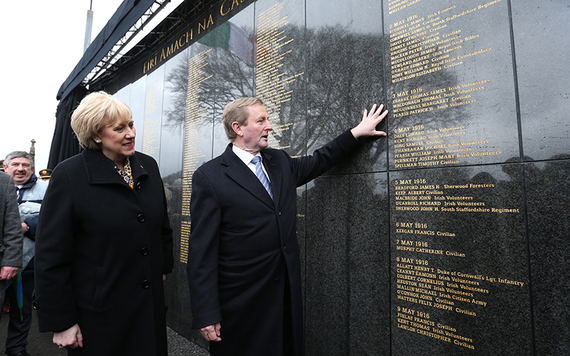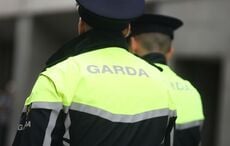An All-Party committee wants the Irish government to rethink plans to remember the Black and Tans, Auxiliary and Royal Irish Constabulary constables who died during the Irish War of Independence by placing their names alongside 1916 Easter Rising heroes.
Speaking to Extra.ie, Senator Mark Daly claimed that Irish Minister for Culture Josepha Madigan confirmed that the names of the Black and Tans who died will be inscribed on the Wall of Remembrance in Glasnevin Cemetry, Co Dublin.
First unveiled in 2016 on the centenary of the Easter Rising, the wall has already faced some backlash for placing the names of British soldiers who died during the rebellion alongside those who fought for the rebels and their leaders.
Now the names of the Black and Tans may be set to join them.
Read more: “Come Out Ye Black and Tans” tops Irish and British iTunes after RIC controversy
Senator Daly claims that the move was confirmed by the minister at a meeting of the All-Party Consultation Group on Commemorations on April 3, 2019, but there have been complaints about accurate recordings of the minutes of the meeting.
He states that he questioned the minister on whether the Black and Tans would be included in a commemoration, which she confirmed. He then states that they began to discuss the wall in Glasnevin, known officially as the Necrology Wall.
"I then asked are the names of the Black and Tans and Auxiliaries going to be inscribed on this and she [Ms Madigan] said, 'Yes, they will.'"
The senator believes that their inclusion would be unacceptable: "There is no hierarchy of victims but there is a hierarchy of causes."

The Wall of Remembrance in Glasnevin. Image: RollingNews.ie.
The further revelations come a week after the massive controversy over a planned Royal Irish Constabulary / Dublin Metropolitan Police commemoration in Dublin for January 17
The commemoration was ultimately “deferred” by the Irish government after scores of Irish politicians as well as members of the public denounced the event but the controversy continues about how the RIC and Black and Tans will be remembered in Ireland in the next few years of centenaries for the War of Independence and Civil War.
The Glasnevin Trust has argued the Necrology Wall had always intended to note every person who died during the conflicts from 1916 until 1923 and that research is currently underway to discover every individual who died during the Revolutionary Era.

Then Taoiseach Enda Kenny unveiling the wall in 2016. Image: Rollingnews.ie.
In a statement, the Trust said: "Glasnevin Trust is currently researching and compiling the list of names of those who died between 1916 and 1923 as a result of the conflict.
"Ongoing consideration is being given by Glasnevin Trust to ensure the names can be made public in a manner such that the Necrology Wall will be received in the spirit by which it is intended.
"The essence of the Necrology Wall is remembrance and reflection, based on historical fact, in a non-judgmental, non-hierarchical manner, of each and every person who died as a result of the conflict. The ambition, in turn, is to stimulate further reflection, discussion and, hopefully, understanding and in so doing contribute to the ongoing process of peace and reconciliation on this island.
"At the beginning of this project, it was stated that the concept of this Necrology Wall was to simply record, in chronological order, without any distinction based on nationality, rank or religion, all those who died as a result of political conflict on this island, from the Easter Rising to the end of the civil war."

Irish Minister for Culture Josepha Madigan. Image: RollingNews.ie.
A spokesperson for Minister Madigan told Extra.ie there was no plans to commemorate the Black and Tans: "Glasnevin cemetery is a private operation and does not come under the remit of the department. But my understanding is that no names have been added to the plaques you refer to in recent years and there are no plans to do so this year.
"No, Minister Madigan categorically did not confirm that the Black and Tans and Auxiliaries were to be commemorated at that meeting or at any other time,’ he said."
Do you think all the names should be included on the wall in Glasnevin? Let us know in the comments section, below.




Comments